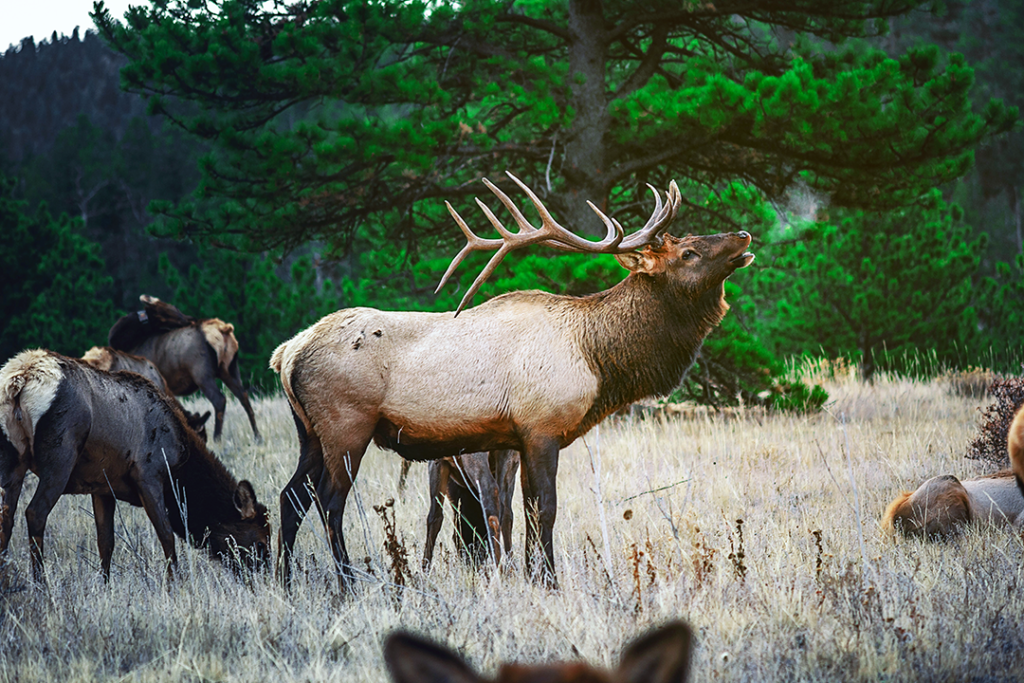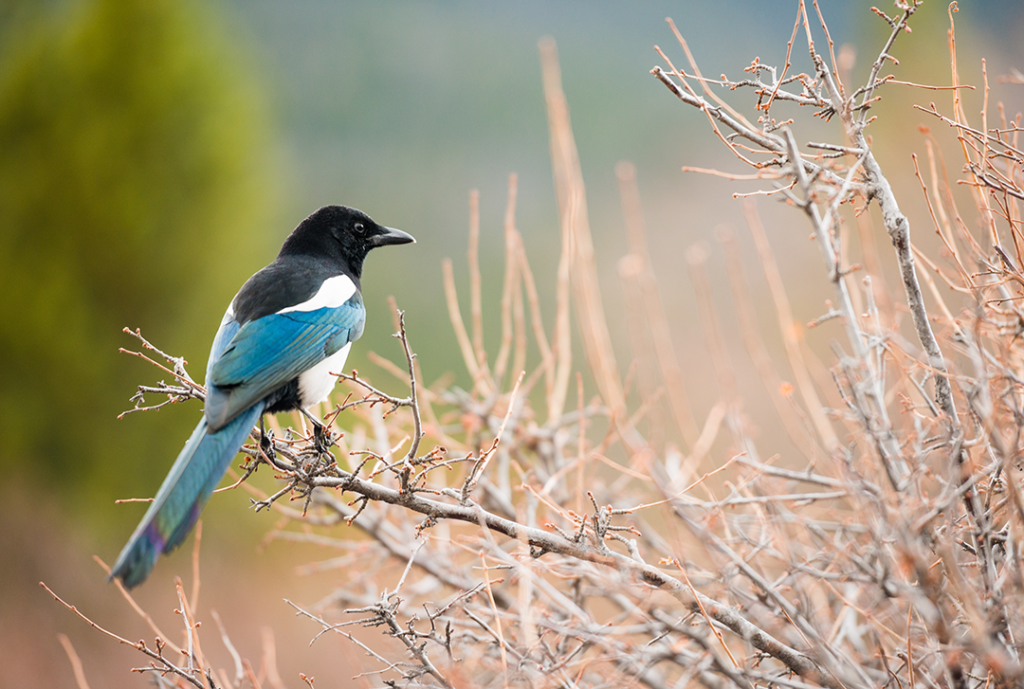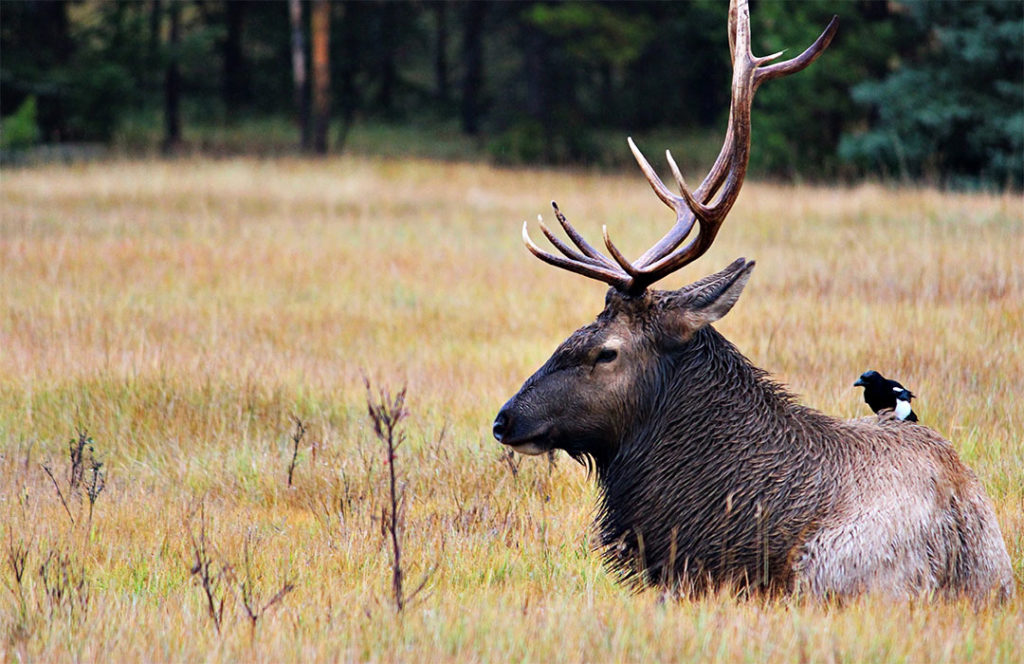The Unlikely Relationship of Elks and Magpies
Ever spotted an elk in the wild? If so, you might have noticed a magpie or two nearby. That’s because these two amazing North American animals have an unlikely but mutually beneficial relationship.
Read on to learn more about elk and magpie habits and habitats while exploring exactly how these animals support one another in the wild.
The North American Elk or Wapiti
Often confused with moose due to their resemblance in size, the North American Elk or Wapiti (“white-rump” in Shawnee language) is one of the largest mammals on the continent. With an average shoulder height of about 1.2 to 1.5m and weighing anywhere from 250 to 500 kgs, it’s no wonder these animals are only second in size to moose!
North American Elk were once bountiful throughout North America but were decimated in the late 1800s due to a combination of overhunting and habitat loss. Out of six subspecies, only four remain, the Roosevelt, Tule, Manitoban, and the Rocky Mountain. Today over half of our elk population can be found in British Columbia, particularly in the Kootenays and the Peace-Omineca Region.

Elk are reddish-brown during the summer and dark brown during the winter. While only males have antlers, their beautiful branch-like crowns are even larger than mooses’. With large expressive eyes, elk are considered to be very sociable animals that won’t wander far from the herd. They are also very vocal for a hoofed animal, their grunts can be heard frequently and over great distances.
These herbivores are very similar to cows with a four-chambered stomach that allows them to digest lots of vegetation. During colder months, the elk may strip the bark from trees and eat moss, twigs, and acorns.
The Black-Billed Magpie
There are over 20 species of magpie across the world but only the black-billed magpie can be found in Canada. Black-billed magpies are unmistakable, their black iridescent metallic blue-green tones and contrasting white underparts shine through as they navigate open farmland and woodlands. Their tails, another recognizable trait, often make up over half of a magpies’ total length.

Although they may wander farther east during the winter, magpies typically breed from southern Yukon to western Manitoba. Unlike their crow cousins, magpies do not normally migrate. In recent decades, these opportunistic creatures have extended their range northward into the Northwest Territories.
Some mating pairs remain together for life. While both sexes typically choose a nesting site together, they’re not above the occasional marital dispute—sometimes disagreements occur and each will begin building separate nests in different locations.
Magpies are omnivores. Their diet consists mainly of ground-dwelling arthropods, seeds, and carrion but they may also develop a symbiotic relationship with large hooved-footed mammals like elk (more on that shortly).
The Elk and Magpie Relationship
These two lovely creatures have a mutually beneficial relationship. In the wild, you might spot an elk with something bothering their ears—ticks, most certainly. Wait a while and you may just see a magpie land on its head or back and probe around in search of a snack.
We still don’t know much about this unlikely relationship. In fact, researchers have found that not all elks are receptive to a magpie’s presence. The relationship seems to be largely dependent on personality. Studies so far show that it’s usually a combination of shy elks and bold magpies that are most likely to interact with one another.

Researchers are still trying to determine if there’s a relation between shy or bold elks and the likelihood of being parasitized by ticks. But experts believe the aversion to a magpie’s presence is probably just a reaction to the stimuli these birds provide. Bold elk tend to have increased rates of aggression towards other species and humans—magpies may just be eliciting a similar reaction.
What can you do to help?
Magpies don’t avoid human development. They are opportunistic feeders and often spend time in areas with easy access to food. Although there are no current population concerns, they are often vilified because of their ability to raid other birds’ nests and have been subject to prosecution through bounty schemes.
Although the elk population in Canada is of least concern conservation-wise and marked as growing or sustained, provinces like Ontario and British Columbia have introduced management plans.
The best way to help is to stay informed on conservation initiatives and the state of nature in Canada.
Nature Canada has been working towards the protection of Canadian wildlife and wilderness for generations. Subscribe for updates to be the first to know how to help and advocate for these animals!



